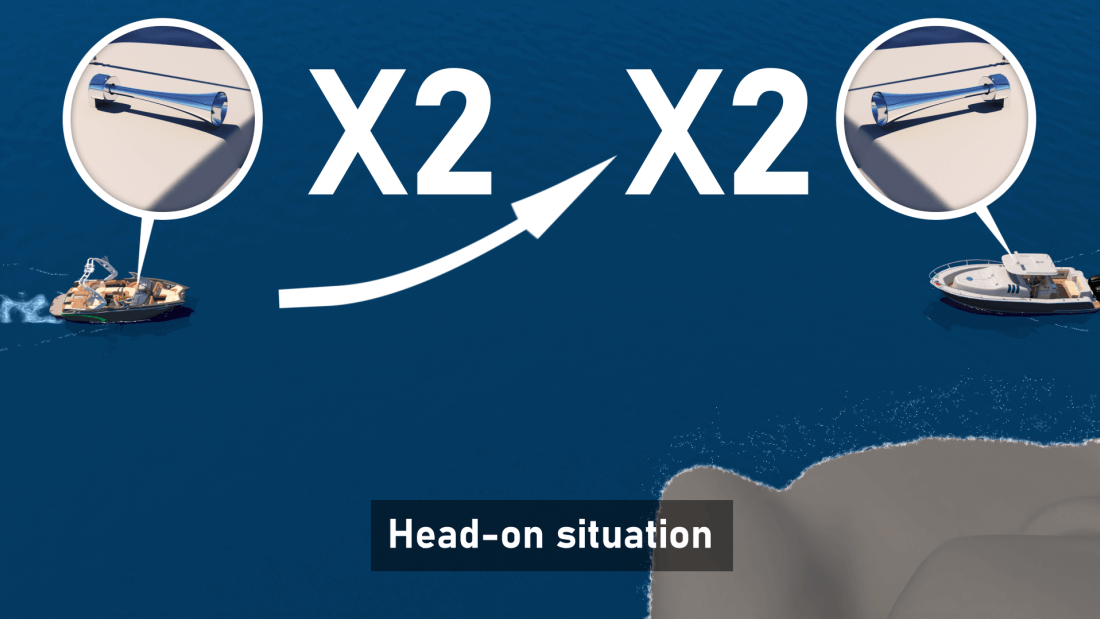Starboard to starboard

When two boats meet on the water, one of the most important aspects of safe navigation is understanding how to pass each other correctly. The term “starboard-to-starboard” describes a passing arrangement where each vessel keeps its starboard (right) side next to the starboard side of the other vessel. While port-to-port is the standard and preferred method of passing in most situations, starboard-to-starboard passes are also allowed and frequently used when necessary. Understanding what this maneuver means, when it is used, and how to complete it safely is essential for preventing collisions and reinforcing good seamanship.
What “Starboard-to-Starboard” Means
Every boat has a port side (the left side when facing forward) and a starboard side (the right side when facing forward). When two vessels meet head-on, the safest and most typical passing method is port-to-port, which mirrors the way cars pass on a road: each vessel moves slightly to starboard and passes on the left side.
A starboard-to-starboard pass, on the other hand, means that both vessels pass with their right sides next to each other. This requires each vessel to adjust course to port (left), which is the opposite of the typical maneuver.
This is not the default rule in the COLREGS, but it is permitted when the circumstances require it and when both vessels communicate clearly and agree to the passing arrangement.
When Starboard-to-Starboard Passing Happens
While port-to-port is “normal,” starboard-to-starboard becomes necessary in several situations:
1. Channels With Sharp Bends
In narrow or winding channels, two vessels may naturally find themselves positioned in a way that makes a port-to-port pass unsafe or impractical. If both boats are already on the inside of a bend, turning to starboard could push one vessel dangerously close to shallow water. In such cases, turning to port and passing starboard-to-starboard keeps both vessels in the safer part of the channel.
2. Obstructions on One Side
A vessel may be unable to maneuver to starboard due to:
-
shallow water
-
buoys or markers
-
docks
-
floating debris
-
construction or dredging equipment
If a vessel must remain close to the starboard side of the channel, a starboard-to-starboard pass naturally results.
3. Traffic Separation Schemes or Designated Lanes
In busy waterways with marked inbound and outbound lanes—such as ports, harbours, or rivers—the traffic flow may require vessels to keep to specific sides. When two vessels meet while confined to their designated lanes, the proper pass may be starboard-to-starboard.
4. Commercial Traffic and Large Vessels
Large vessels like:
-
cargo ships
-
cruise ships
-
tankers
-
towboats and barges
often have restricted ability to maneuver. Their size, draft, or momentum can force other vessels into situations where a starboard-to-starboard pass is the only safe option.
5. Unusual Situations or Local Customs
In certain rivers or harbours, local practices may differ from international norms. Some waterways have their own standard passing protocols, and in these areas, starboard-to-starboard may occur more frequently.
How Vessels Communicate a Starboard-to-Starboard Pass
Clear communication is the most important part of safely completing a starboard-to-starboard pass. The COLREGS and Inland Navigation Rules specify standard sound signals:
Sound Signals
-
Two short blasts: “I intend to leave you on my starboard side.”
-
If the other vessel agrees, it responds with two short blasts.
This confirms that both vessels will turn to port and pass starboard-to-starboard.
VHF Radio
On crowded waters, commercial channels, or in reduced visibility, radio communication is vital. A typical call might be:
“Northbound vessel approaching the bend—this is the southbound vessel at marker 12. Proposing a starboard-to-starboard pass.”
Clear confirmation avoids confusion and prevents last-second maneuvers that could cause a collision.
Navigation Lights at Night
At night or in fog, vessels rely heavily on navigation lights. In a starboard-to-starboard pass:
-
both vessels will see the green starboard light of the other boat
-
they will NOT see each other’s red port light if properly aligned
This visual cue helps confirm that both vessels are positioned correctly for the intended pass.
How to Execute a Starboard-to-Starboard Pass Safely
1. Slow Down
Speed reductions give more time to react and more control over your boat.
2. Signal Your Intent Early
Use sound signals or radio before altering your course. Never assume the other vessel knows your plan.
3. Alter Course to Port Smoothly
A gentle, deliberate turn to port helps maintain predictable movement.
4. Maintain Situational Awareness
Watch:
-
the other vessel’s bow direction
-
speed changes
-
navigation lights
-
surrounding traffic
-
nearby hazards
5. Maintain a Safe Passing Distance
Aim for the widest safe margin, especially in narrow waters.
6. Return to Normal Course After Passing
Once the vessels have safely cleared each other, slowly return to your original heading and speed.